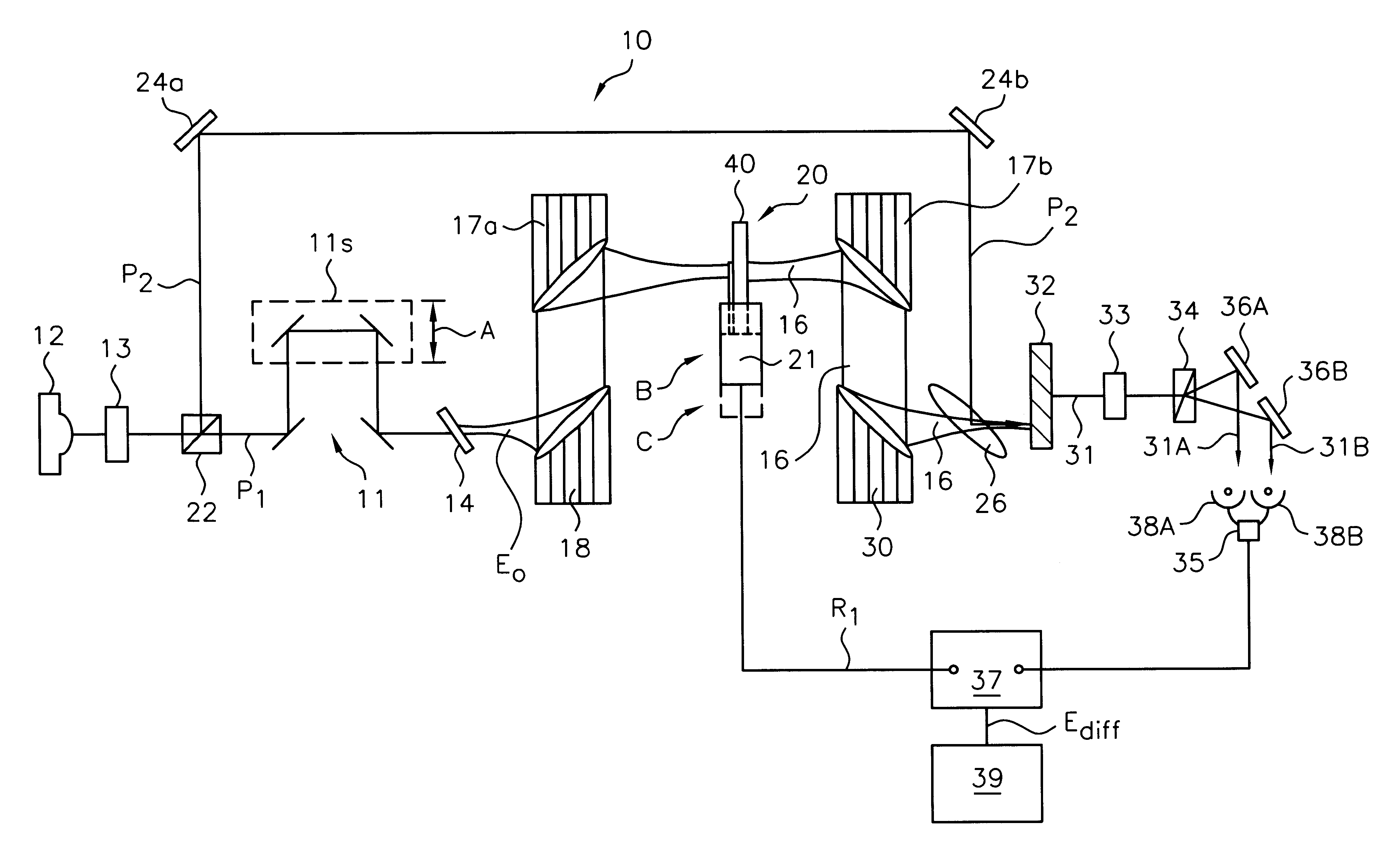Differential time domain spectroscopy method for measuring thin film dielectric properties
a technology of dielectric properties and time domains, applied in the direction of phase-affecting property measurement, instruments, measurement devices, etc., can solve the problems of difficult extraction, time-consuming, difficult to obtain the visible small phase shift in the waveform under realistic experimental conditions, etc., and achieve the effect of reducing the minimum measurable thickness
- Summary
- Abstract
- Description
- Claims
- Application Information
AI Technical Summary
Benefits of technology
Problems solved by technology
Method used
Image
Examples
example
The reference waveform and the differential waveform at 0.7-1.2 THz for a free standing parylene-N (Pa-N) film with a thickness of 1.8 microns were derived using the method of the present invention. For this example, a model Coherent Rega 9000 mode-locked titanium:sapphire laser providing laser pulses with 800 nm central wavelength, 120 fs laser pulse duration, and 250 kHz repetition rate was used. A 2 mm thick ZnTe crystal was used as the THz emitter via optical rectification. A galvanometer adapted to move the sample in and out of the pulse path at a frequency of 16 Hz was also used.
A comparison of typical reference and differential waveforms in the 0.7-1.2 THz frequency range are plotted in FIG. 4. The differential signal is much smaller than the reference signal but is still measured with good signal-to-noise ratio. FIG. 5 shows the refractive index calculated from the experimental data using Equations (7) and (9). FIG. 5 shows the results from four repeated measurements, with ...
PUM
| Property | Measurement | Unit |
|---|---|---|
| frequency | aaaaa | aaaaa |
| thickness | aaaaa | aaaaa |
| vibration distance | aaaaa | aaaaa |
Abstract
Description
Claims
Application Information
 Login to View More
Login to View More - R&D
- Intellectual Property
- Life Sciences
- Materials
- Tech Scout
- Unparalleled Data Quality
- Higher Quality Content
- 60% Fewer Hallucinations
Browse by: Latest US Patents, China's latest patents, Technical Efficacy Thesaurus, Application Domain, Technology Topic, Popular Technical Reports.
© 2025 PatSnap. All rights reserved.Legal|Privacy policy|Modern Slavery Act Transparency Statement|Sitemap|About US| Contact US: help@patsnap.com



